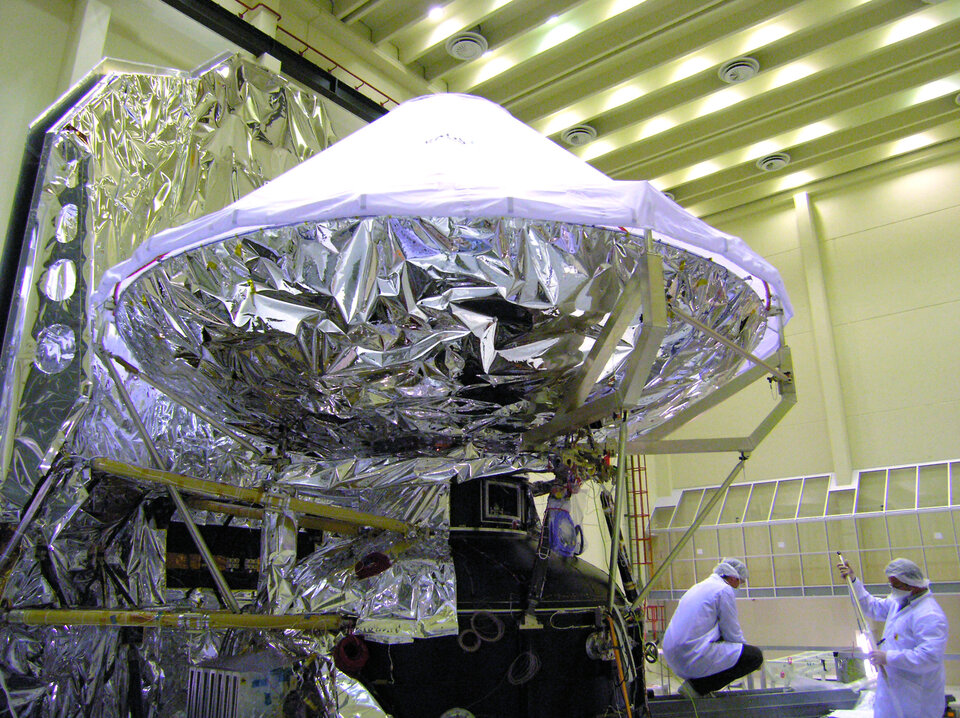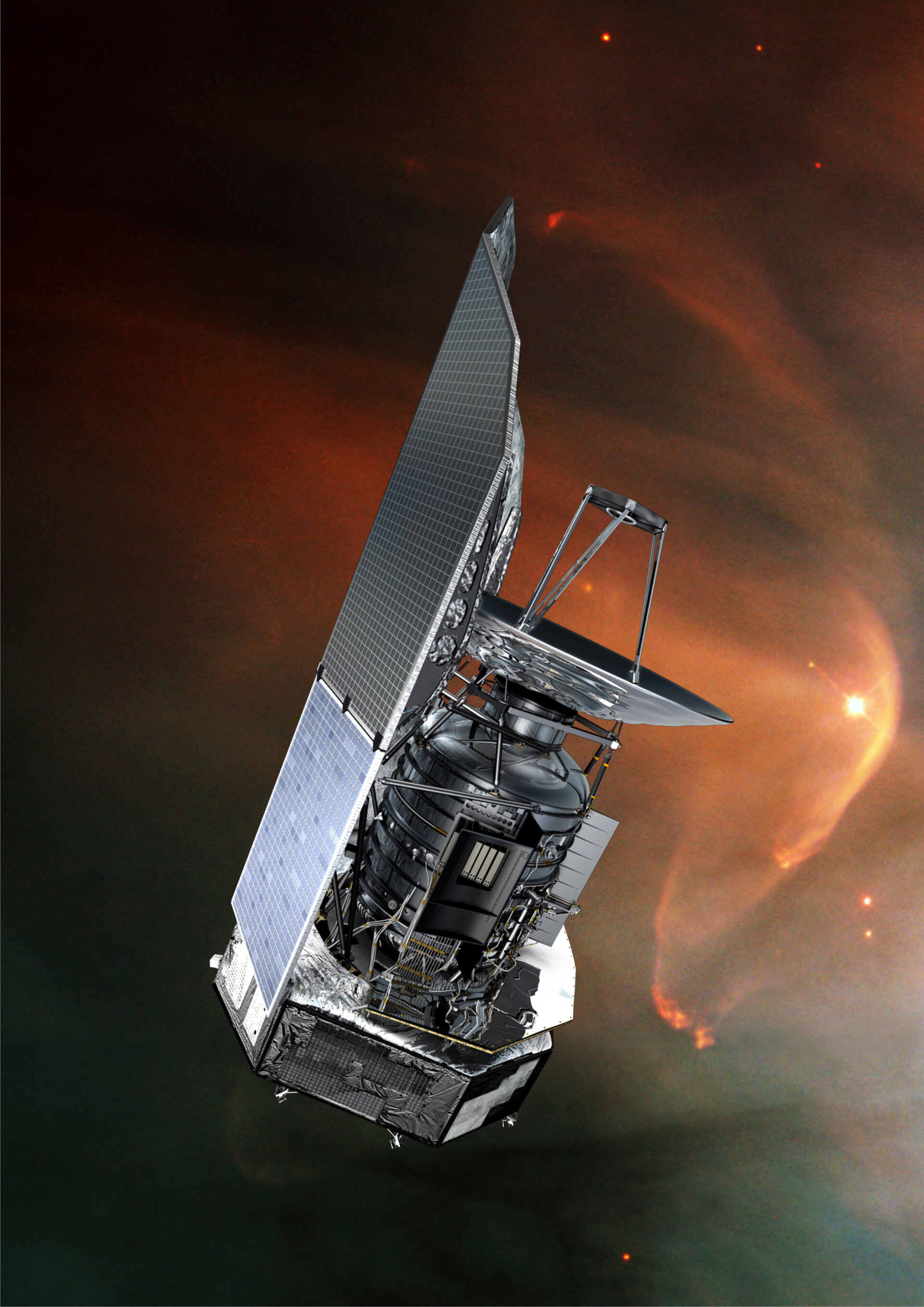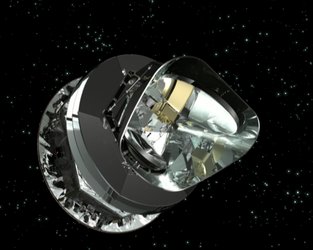Superfluid cryogenics gives Herschel a cool view of the cosmos
To achieve its goal of detecting the lowest temperature objects in the Universe ESA's Herschel space telescope must keep even cooler. The spacecraft carries a cooling system to maintain its sensors at less than two degrees above absolute zero.
To observe in the far-infrared at maximum sensitivity Herschel's instruments require an operating temperature of 1.7 Kelvin (-271.3°C) or less. If the instruments or their surroundings reach higher temperatures then they would start to emit infrared themselves, swamping faint emissions from cool celestial objects.

Like its sister mission Planck, Herschel's success depends therefore on cryogenic technology. The two spacecraft are due to fly on the same Ariane 5 together to the distant Earth-Sun Lagrange Point 2 (L2). Unlike Planck however, Herschel employs a so-called passive cooling design based on an onboard supply of superfluid helium an element selected for its low boiling temperature and its unique characteristics when entering the superfluid phase.
"It's called a passive design because once the initial conditions have been set up and it's working in orbit then there's absolutely zero cryogenic reasons why anything should ever go wrong," explains Chris Jewell ESA’s cryogenic expert for Herschel/Planck, "Imagine a refrigerator that runs independent of mains power because it is connected to a bottle of liquid nitrogen instead. As long as that bottle has liquid in it and your refrigerator has thermal isolation it will stay cold."
More information
Chris.Jewell @ esa.int






